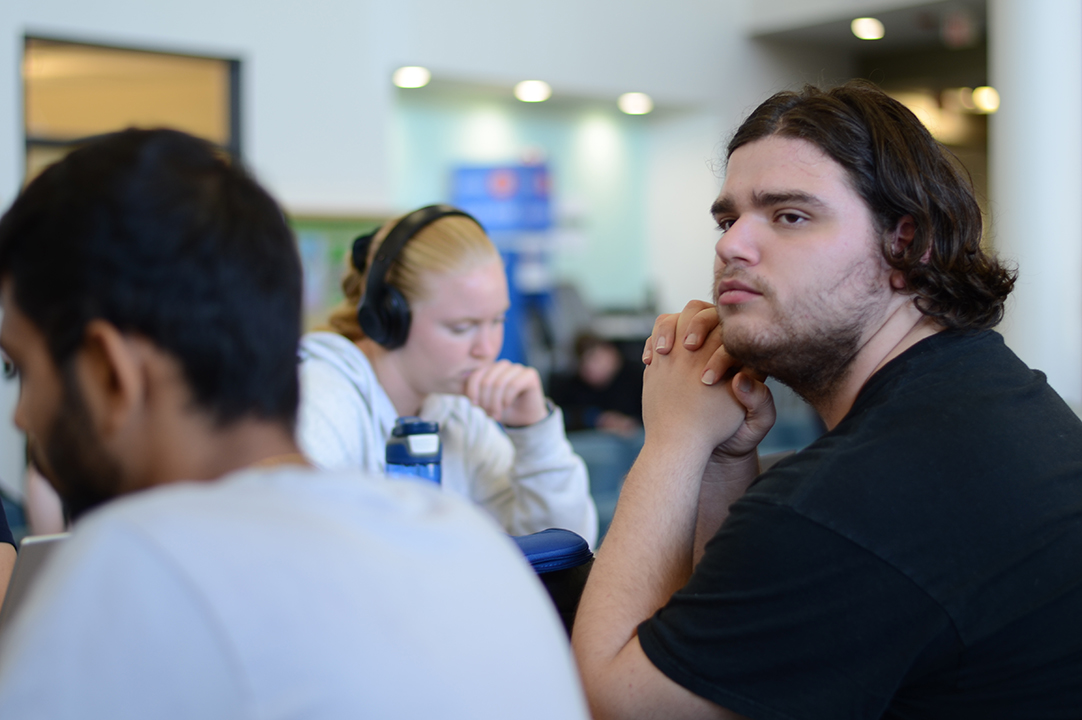It’s the end of March 2023 and I am making my way to Restaurant International, Algonquin College’s student-run fine-dining restaurant, to cover a charity dinner for the campus newspaper. I’m just a little over eleven weeks into my new role as a reporter and everything is still fresh. I spot the person I have to interview helping his crew put up fluorescent decorations and set tables. I know I have to walk up and talk to him, but I feel my stomach churning.
“I hate this,” I tell myself. “He’ll probably find you weird and awkward. Maybe I can just shoot him an email afterward?”
But no, that would go against the journalistic foundations of what helps make a story special. The human element enriches a story in a way that a simple written statement can’t accomplish. The tone, expression and non-verbal cues that come with a face-to-face conversation help the journalist, and ultimately the reader, truly understand the person being interviewed and what they’re trying to say.
Well, I guess I’ll just bite the bullet. How bad could it be?
“Hi! My name is TJ Sider and I’m a reporter for the Algonquin Times,” I said with an exaggerated smile on my face.
“….and I suffer from social anxiety,” I thought to myself.
Having social interactions with anyone can feel like a tornado is swirling through my consciousness and I’m holding on for dear life trying not to get sucked in. The negative self-talk narratives don’t help, either: “You aren’t cut out for this.” “This person doesn’t like you.” Or the classic “I always say the wrong things.”
There have been times, I must admit, where it’s been easy for me to consider giving up in my program.
In recent months, however, I’ve being trying a new approach: working with myself as I am. This means even embracing my social anxiety. For instance, as I force myself to leave the warm tranquility of my room I imagine that I’m putting on a “reporter hat.”
The “reporter hat” helps motivate me and signifies the beginning of my mission for the day: serving the community I love through fair, accurate and balanced storytelling.
I’ve learned that staying quiet and listening deeply to my sources enriches the story I’m telling. By challenging myself and doing scary things, I’m realizing that people don’t actually care as much as I think they do. Above all else, people just want to be heard, and that’s what I’m there to do.
I’m not alone in my efforts to work with the way I’m wired. Kieran Gray, a first-year baking and pastry arts management student, also faces these challenges.
“It’s a lot moving here,” said Gray. “I come from a really small town so moving to Ottawa is lots of people, lots of change.”
This sounds familiar. I, too, grew up in a small town and found it difficult to adjust to my surroundings. New people are scary.
Gray says she tries to combat this fear by finding a person she thinks she would be comfortable with. “Mostly just like finding someone I connect to and hang out with them,” Gray said. “Having one person that specifically helps, that you can stick to makes it a lot easier.”
Ahmed Elbadri works with many people who suffer from social anxiety. He is a student success specialist in the School of Media and Design at Algonquin College. Elbadri advises getting comfortable with whatever you are pursuing and finding creative solutions to problems.
“At the end of the day, you still do the same thing,” Elbadri said. “It’s how you go about it. Even if you are an introvert, you can still be comfortable doing it, but you’ll be doing it a different way.”
None of this changes the fact that journalism is seen as an extrovert’s field. Strong verbal communication skills are key, whether you’re discussing a story idea with colleagues in the newsroom or interviewing people off of the street. Almost every activity in the journalism program is people-driven, from having to work collaboratively with your classmates writing stories to gathering information quickly from outside sources.
It’s demanding and can be downright exhausting.
For me, my favourite part of journalism is sitting down and figuring out a puzzle at my desk. Gathering quotes from my phone, sifting through my notes and putting them together through a sequence of keystrokes on my laptop is a satisfying process from beginning to end. The process is akin to being a chef: the journalist combines the ingredients together to make a well-crafted story sandwich for customers – in this case you, the reader – to consume.
There is a place for me, the socially anxious journalist, in this field. And there’s a place for you, too. There will always be a place for socially anxious teachers, doctors, lawyers, or whatever your career path may be. Just put your hat in the ring and go for it.
Because at the end of the day, we all have something to offer. So what if something you said didn’t come out right? As long as we put forth our best effort and have the tools required to do our job, that’s all that matters.


